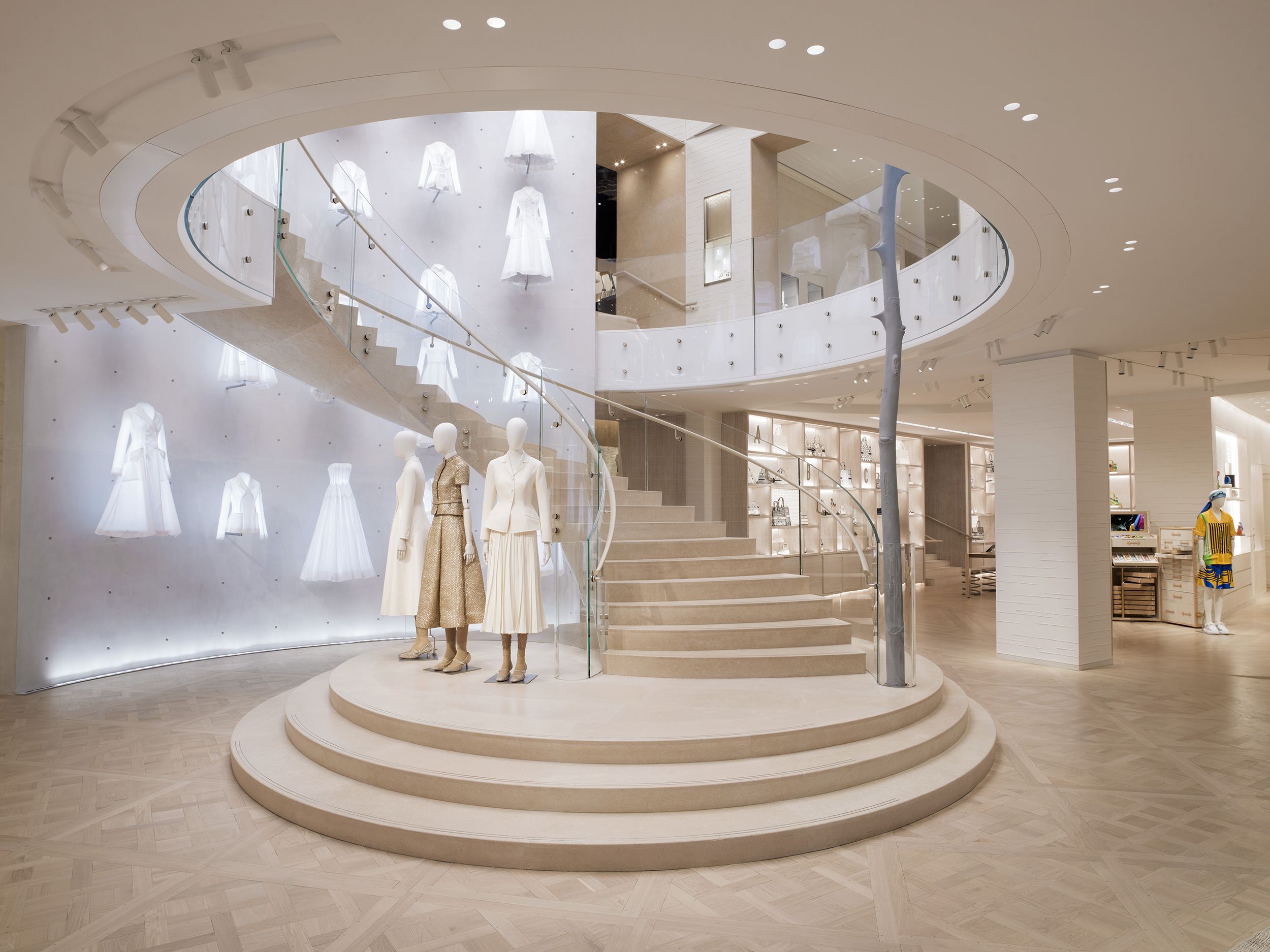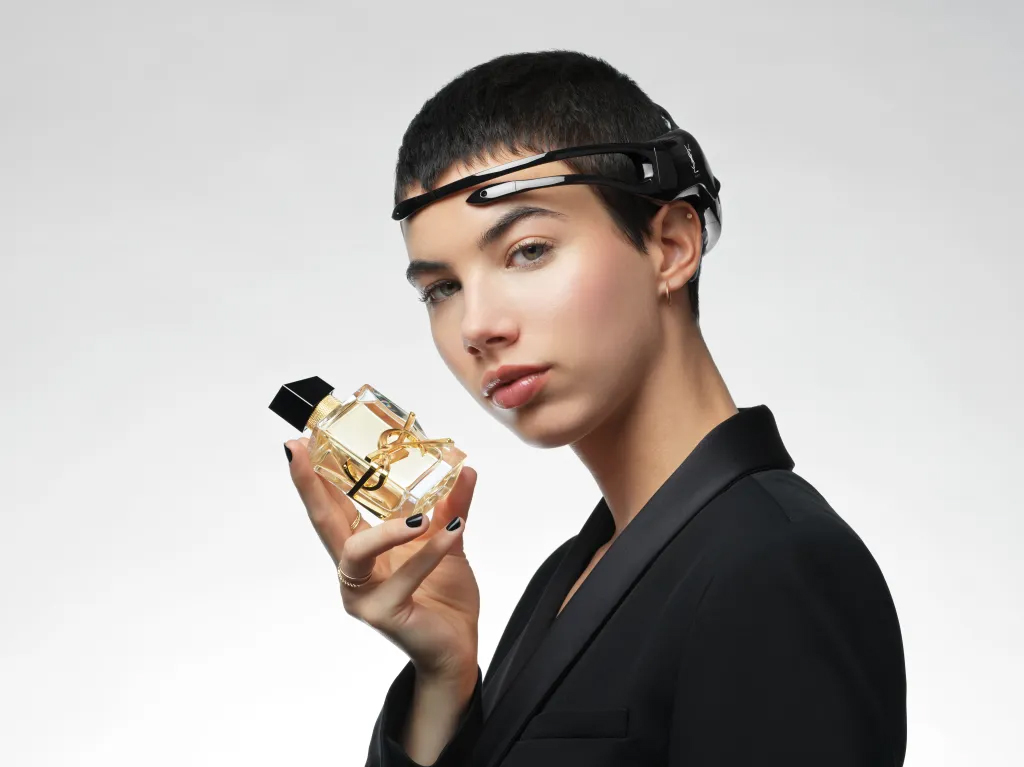
How are luxury brands redefining the future of experiential retail?
As the luxury sector navigates economic challenges, technological advances and a fiercely competitive market, the bricks-and-mortar boutique continues to evolve as a resilient cornerstone of luxury maisons’ identities – offering deeper immersion into brand universes.
Despite the surge in digital commerce, physical stores retain their significance. Investing in expansive and innovative designs is proving to be a savvy strategy – especially as brand marketing moves back into the spotlight.
In this edition, we explore how luxury retail destinations are being re-invented not only to draw people to unique spaces, but also to experience products and services in new ways and in new environments.
Physical retail now personifies brands’ past and present DNA.
: Flagships as cultural icons : Ambitiously renovated flagship stores such as Dior’s Avenue Montaigne and Tiffany & Co’s Fifth Avenue locations are leading large-scale luxury activity. These mega-projects are driving revenue, creating a lasting impression and defining a new class of retail spaces with true cultural clout. The latter is described by Tiffany & Co’s president and CEO Anthony Ledru as ‘the renovation of the century’ – and brims with history and cultural references, including the Breakfast at Tiffany’s café.
: Archive activation : Dior has prioritised archive prints as themes for concept pop-up stores, starting in Shanghai and expanding to London. In a collaboration with Harrods in August 2023, the London pop-up heavily featured the iconic Plan de Paris motif by Christian Dior from the 1950s. The print also appeared across ready-to-wear, bags, homeware and stationery – casting a new light on archival activations in retail.
: Design DNA : At Burberry’s London flagship store, a key attraction is a trench coat library showcasing both historic and bespoke designs – a major draw for curious consumers. Similarly, Bottega Veneta’s revitalised Paris flagship store explores its roots in artisanal craft through the lens of Italian modernism via heavy use of Venetian glass and numerous references to the brand’s iconic Intrecciato woven leather motif.
: Interactive storytelling : Brand storytelling meets interactive technology at the TAG Heuer Fifth Avenue flagship store. Here, heritage is highlighted via multimedia installations and a connected watch display vignette, which highlights how the brand’s craft has been blended with innovative technology in the smart watch category since 2015.
Continue the conversation: Discuss what aspect of Dior’s heritage interests your clients most. What role does the store play in conveying the brand’s DNA?
 Images: Dior 30 Avenue Montaigne, France
Images: Dior 30 Avenue Montaigne, France
As brands test new use cases for technology’s ability to enrich their storytelling, the future boutique must be fully integrated into an omnichannel journey.
: Phygital opportunities : Interactive, immersive and digital innovations continue to connect online and in-store retailing. As the first bricks-and-mortar store owned and operated by a decentralised autonomous organisation (DAO), DeStore is a prime example of this. The idea is that corresponding non-fungible tokens (NFTs) grant holders access to a Discord server where they can vote on the store’s design and product selection.
: Immersive partnerships : Similarly tapping into Web3, Valentino’s partnership with luxury Web3 platform Unxd kicked off with an immersive unveiling of its new Plaza 66 Shanghai flagship store on Instagram Reels. The partnership spans virtual fashion, physical craft and unique community experiences that deepen client connections with the brand.
: Innovative in-store offerings : Taking another bold step towards a tech-forward retail approach, Ralph Lauren’s luxury concept in Miami’s iconic Design District became the brand’s first store to accept cryptocurrency as a form of payment in 2023. Customers can now make purchases with cryptocurrencies such as Bitcoin, Ethereum or Polygon.
: Connected consumption: Retail spaces will play a vital role in housing evolving connected product offerings, especially as fashion and luxury brands explore new applications for digital tokens. In July 2023, Dior launched its first venture into the world of Web3 with its B33 sneaker range, a physical sneaker that comes embedded with a Near Field Communication chip (NFC) tied to an NFT digital twin.
Europe is also now preparing for mandatory digital product passports for textiles starting in 2026. To help brands adjust, Open.Mode has launched its first blockchain-based digital ID tags for brands such as Mother of Pearl.
Continue the conversation: How do your clients feel about phygital shopping experiences? Have they explored any of Dior’s own digital initiatives?
 Image: Scent-Sation by YSL, France
Image: Scent-Sation by YSL, France
Perhaps the most important technology application in luxury retail will be about enriching the relationship between the customer and the sales associate.
: New clienteling tools : New tools will transform the interaction between customers and sales associates, enabling deeper, more personalised engagement. Putting generative AI into the hands of sales staff and managers, Microsoft has announced new AI tools for retailers, providing personalised shopping experiences and support for store operations through Azure OpenAI Service on Microsoft Cloud for Retail.
: Appetite for technology : Tech won’t replace in-person shopping, but offers new opportunities to seamlessly complement interactions with sales assistants. According to insights from Comité Colbert and Bain & Co, 75% of French, American and Chinese luxury consumers would adopt new technologies for improved appointment-booking, personalised wishlists, virtual try-ons and digital tags for detailed product information.
: State-of-the-art beauty : Beauty brands are using neuroscent technology to tailor fragrance discovery. L’Oréal teamed up with the neurotechnology firm Emotiv to offer a unique scent selection experience, while YSL’s state-of-the-art in-store experience Scent-Sation uses EEG brainwave analysis to provide personalised fragrance advice.
LVMH-owned beauty retailer Sephora’s second Store of the Future in Shanghai is another innovative retail space with seven digital touchpoints, including big data-driven skin analysis, AI-generated make-up recommendations and radio frequency identification (RFID) product labels for ingredient details.
Continue the conversation: Ask your clients if they find AI’s potential to provide a range of personalised recommendations and suggestions appealing.
Trends intelligence, research, and insights – on demand. Actionable foresight across 20+ sectors.
Book a demo to view the platform.